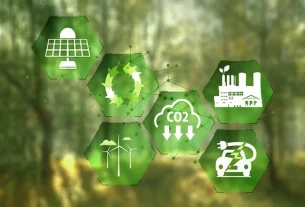
The revisions agreed today introduce zero-rating of emissions from the combustion of renewable fuels of non-biological origin (RFNBOs), recycled carbon fuels (RCFs) and synthetic low carbon fuels (SLCFs) in the ETS, subject to compliance with the criteria set out in the Renewable Energy Directive (RED II), notably the ‘additionality’ rules (electricity used for RFNBO product to be renewable and additional) and GHG emissions savings (at least 70% compared to a comparable fossil fuel at life cycle basis), ensuring that such emissions are accounted for, and that double counting is avoided.
Moreover, improvements and changes have been made to the existing rules (e.g., on CO2 transfer with means other than pipelines, and on CO2 emissions considered to be permanently chemically bound in a product).
The agreed changes to the rules also cover: zero-rating of biomass fuels concerning the use of a recently established EU-wide database, facilitating the demonstration of compliance with REDII’s sustainability and GHG-savings criteria; detailed monitoring and reporting requirements for alternative aviation fuels; harmonisation of small emitter thresholds; biomass/RFNBOs/RCF treatment in Aviation; and monitoring and reporting requirements for non-CO2 aviation effects per flight.
Measures on the monitoring, reporting, and verifying (MRV) of non-CO2 emissions from the aviation sector
The Intergovernmental Panel on Climate Change (IPCC) has long highlighted the importance of addressing the full climate impact of aviation, and since 2008, the non-CO2 impacts have been recognized in Union law. These effects, such as persistent contrails, NOx and soot particles, contribute significantly to global warming, accounting for two thirds of aviation’s total climate impact.
Building on this recognition, in the 2023 revision of the EU Emission Trading System Directive, the co-legislators stressed the need to address these non-CO2 effects and mandated the Commission to establish a monitoring, reporting and verification system for these effects, to be operational from 1 January 2025.
This initiative showcases the EU’s leadership and commitment to climate neutrality in line with the political guidelines for the next European Commission. The monitoring of these climate effects is a crucial step to further enhance the scientific understanding of the matter. It is complemented by financial support from the EU ETS Innovation Fund to mitigate the non-CO2 impacts, as well as the Horizon Europe research programme.
Following today’s approval by Member States, the MRV rules will now be formally adopted by the Commission and published in the Official Journal of the European Union.
Background
The Monitoring and Reporting Regulation was amended in 2023 (1st batch of revisions) to take account of the 2023 revision of the ETS Directive, establishing monitoring and reporting rules for the new ETS2, and reflecting a new development under the revised ETS Directive – that installations for the incineration of municipal waste start to monitor and report their emissions under the EU ETS from 2024.
The process for the second revision of the Regulation with additional amendments (2nd batch) started in the fourth quarter of 2023 and was completed today at the Climate Change Committee meeting.
For more information about the EU ETS and the aviation sector, please visit:
